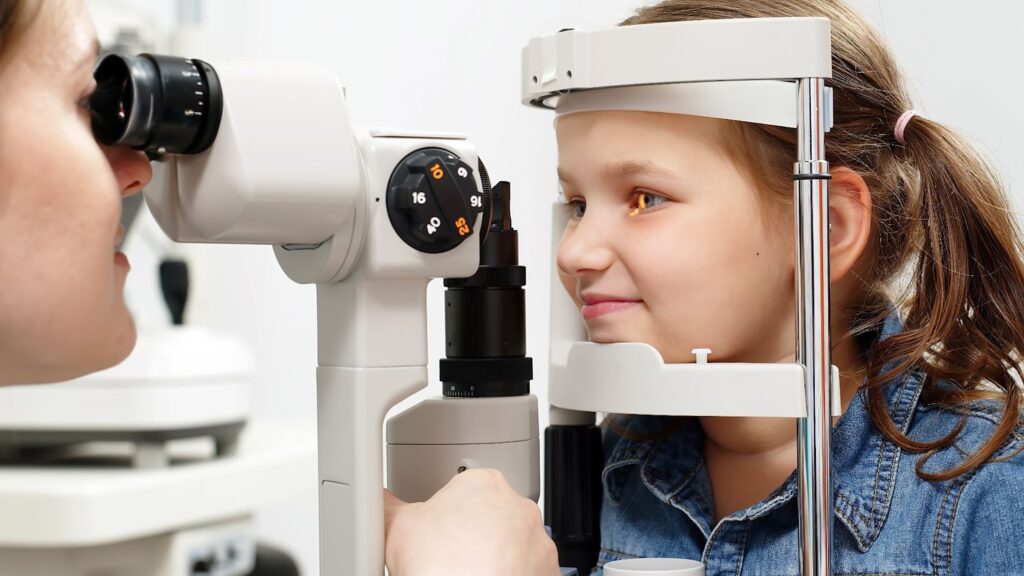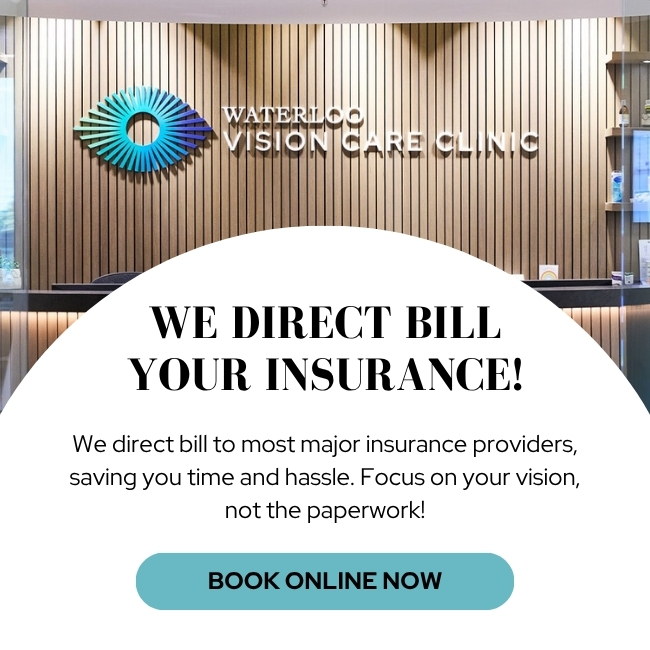For parents and educators, ensuring that children have every opportunity to succeed academically is a top priority. However, undiagnosed vision problems can often cause learning difficulties in children.
Regular eye exams play a crucial role in identifying and addressing these issues early, paving the way for improved academic performance and overall well-being.
The Importance of Regular Eye Exams for Children
Children’s eyes are constantly developing, and regular eye exams help monitor this progress. Early detection of vision problems can help with managing any issues and prevent them from affecting a child’s ability to learn effectively.
The Canadian Association of Optometrists recommends that children have their first comprehensive eye exam at six to nine months old, followed by an additional exam at two to five years old, another exam before starting school, and annually thereafter.
Early detection and treatment of vision problems can have a profound impact on a child’s life. Improved vision can lead to better academic performance, increased confidence, and enhanced social interactions. Children who receive timely treatment are more likely to enjoy learning and participate fully in classroom activities.
Recognizing Signs of Vision Problems in Children
Children may not know they have vision problems, so it’s important to recognize the signs, if any. Look out for:
- Squinting or covering one eye
- Holding books or objects very close to the face
- Complaints of headaches or tired eyes
- Frequent eye rubbing or blinking
- Difficulty maintaining eye contact
- Poor hand-eye coordination
- Delay in reading development
Diagnosing and addressing underlying problems like nearsightedness, farsightedness, or astigmatism can improve the child’s academic performance.
Eye exams can help detect these early on, and your eye doctor can prescribe treatment plans to help meet your child’s vision needs.
Common Vision Problems in Children that Affect Learning
Several vision problems can impact a child’s learning experience. Vision problems can also manifest in ways that might resemble learning disabilities. For instance, a child struggling to read or focus in class might be mistakenly diagnosed with dyslexia or an attention deficit when they really just have trouble seeing the texts.
Myopia
Myopia, or nearsightedness, is a refractive error that makes it difficult to see distant objects. Natural changes to the shape of the eye can cause light to focus in front of the retina. As a result, distant objects appear blurry.
Children with myopia can struggle to see the teacher’s notes from afar. They may also develop eye strain if they try to focus on distant objects for too long.
It is expected that approximately 50% of the world’s population will have some form of myopia by 2050. Children 6-7 could have a higher rate of myopia progression, so it is important to find the signs of myopia early.
Prescription glasses and corrective contact lenses can help manage myopia. Today there are treatment options that specifically focus on slowing down the progression of myopia in children.
Hyperopia
Like myopia, hyperopia causes blurry vision. Also referred to as farsightedness, this refractive error makes it difficult to see objects up close.
Kids with farsightedness may struggle to focus on their reading and writing tasks.
Like myopia, prescription glasses and contact lenses can help address hyperopia.
Astigmatism
Astigmatism develops when the front surface of the eye (known as the cornea) or the internal lens adopts an oval or cylindrical shape rather than a circular one.
These structures are responsible for focusing incoming light into your eyes, which helps you see clearly. The onset of astigmatism can stem from minor variations in eye components’ growth and alignment, and other factors, such as:
- Genetics
- Eyelid pressure
- Eye trauma
- Surgery
Toric contact lenses and glasses can help correct blurred vision caused by astigmatism.
Astigmatism commonly develops early in life, stressing the importance of scheduling comprehensive children’s eye examinations.
It’s common for astigmatism to coexist with other vision issues such as myopia and hyperopia.
Strabismus (Crossed Eyes)
Strabismus, sometimes referred to as crossed-eyes, is a misalignment of the eyes. This condition can manifest in various eye directions, impacting both children and, rarely, adults due to factors like genetic predisposition or eye-related injuries.
Untreated strabismus can exacerbate over time, potentially causing amblyopia (lazy eye) as the brain suppresses input from the misaligned eye.
Early detection through comprehensive eye exams, starting at 6 months old and regularly thereafter, allows for effective treatment options like eyeglasses, prisms, vision therapy, and more.
Amblyopia (Lazy Eye)
Amblyopia, often known as lazy eye, is a visual impairment in one eye that typically develops in childhood. In certain instances, amblyopia may impact both eyes.
In some cases, the “good” eye tends to step in to handle most visual tasks. Unless you purposely cover the good eye, you might not notice that the affected eye has poorer vision. This can be difficult for kids with amblyopia because they might not realize they don’t see as well as they should, or they may assume that having one strong eye is normal.
Addressing amblyopia as early as possible through a comprehensive children’s eye exam can help save the vision in the impaired eye.
Treatment Options for Children with Vision Problems
If your child does have a vision problem, don’t worry. There are often many treatment options available, and your optometrist will be happy to help you choose the most appropriate option for your child.
Depending on the circumstances, treatment options for children’s vision problems can include:
- Eyeglasses or contact lenses
- Myopia control methods (Orthokeratology, contact lenses, special spectacle lenses and/or prescription drops)
- Eye muscle exercises
The Next Steps
Regular eye exams are a vital tool in identifying and addressing vision problems that can hinder a child’s learning and development. By prioritizing eye health, parents and educators can work together to ensure that every child has the opportunity to reach their full academic potential. Don’t wait—schedule an appointment with Waterloo Vision Care Clinic and give your child the gift of clear vision and a bright academic future.




